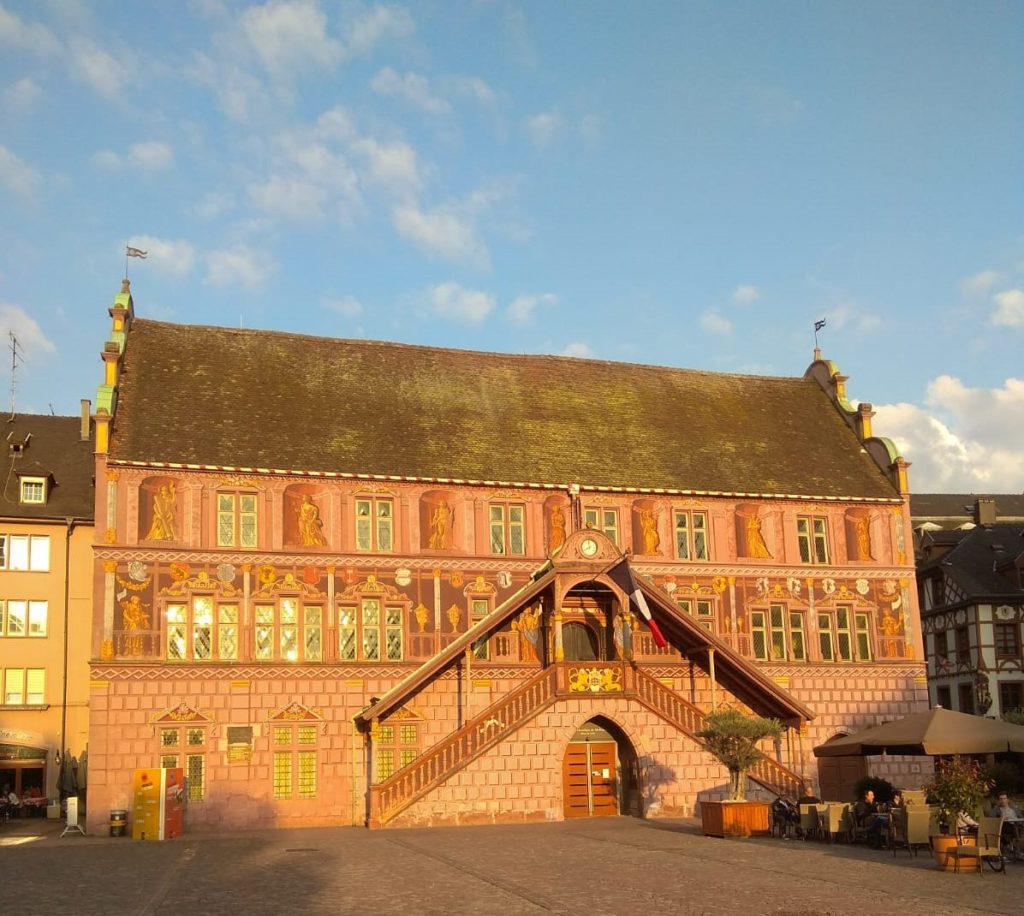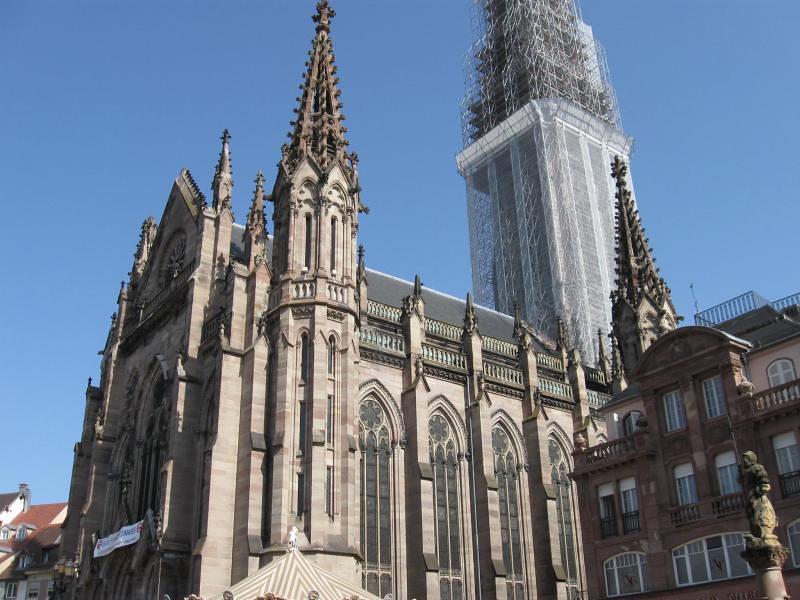Alsace, a region located on the eastern border of France close to Germany and Switzerland, is a magical place full of surprises. In this new series, we will take you to this very special place and give you a taste of the many wonders it has to offer.
By Alessandra Ivaldi / 15.12.2019
Contrary to what you might be expecting, our tour of Alsace doesn’t start at Strasbourg, the most important city of the region, which is also home to many international organisations. The first stop on this fascinating journey is Mulhouse, the second largest city in Alsace, which is just a short distance from the Swiss border.

Place de la Réunion. Picture of @OMAR-MALO
It is a decidedly cosmopolitan city, where history and modernity come together in an extraordinary union. Legend has it that the first local community was built around a watermill, which grew over time, and expanded to become Mulhouse, the city that it is today. Its original name is, in fact, “Mühlhausen”, a name made up of the German “Mühl” for mill, and “Hausen” for houses. Initially, it was a type of city-state,and then later became the Republic of Mulhouse.
Between 1700 and 1800, the city underwent two notable transformations. Firstly, it became an important industrial city, so much so, that it was nick-named the “French Manchester”. Precisely, French. This was because, in the meantime, Mulhouse had lost its independence and became part of official French territory. The local fabric-processing factory was also built during this period and later became one of the key symbols of the Industrial Revolution that spread throughout Europe.
It goes without saying that these historical and economic events largely influenced the city’s development: Mulhouse expanded and witnessed a rapid growth in its population due to flows of migration from the countryside to the urban world. Even today, the city’s identity is heavily characterised by its industrial past. You can see this in its many museums found in both the heart and the outskirts of the city, which is also, unsurprisingly, considered to be the European capital of “les musées techniques”, or technical museums.

Mulhouse’s Town Hall.
Mulhouse is, in fact, home to the Cité de l’automobile, the largest car museum in the world. Inside, visitors can admire a vast and impressive collection of vintage and racing
cars, once owned by the rich local industrialist Fritz Schlumpf. In recent times, many new pieces have been added to the collection, including some of the most modern and technical cars to ever exist. However, the museum doesn’t just stop there: it also has simulators and many other interactive exhibitions you can discover.
Another unmissable attraction at Mulhouse is the Cité du train. Like the Cité de l’automobile, this museum allows visitors to uncover the secrets of train and railway history, as well as embark on surprising journeys onboard trains from some of the most diverse countries and historical eras.
But Mulhouse also has lots more to offer, such as the electric energy museum, Electropolis, and Le Musée de l’impression sur Etoffes, a museum that gathers some of the finest fabrics and artistic creations that the local textiles factory has decided to conserve and put on show.
The fact that Mulhouse is a hub that borders three different states makes it easy to go and discover them – it is easy to get to the Black Forest in Germany, or discover Switzerland, in particular its magnificent city, Basel, which is a short distance from the French border and offers a host of things to see and do.
If you are staying in France, it’s possible to head north and visit the beautiful sights at Colmar and Strasbourg. Anyone planning a trip to Alsace absolutely can’t miss out on visiting these two cities.

Temple Saint-Étienne. Picture of @Timothy Keefe.
Mulhouse’s positioning between these different countries has naturally influenced its architecture, which presents some peculiar characteristics that distinguish it from the rest of Alsace. The houses in the historical centre are characterised by their painted walls, and embellished by splendid frescoes: a detail that you can’t find in any other Alsatian village, and that seems to come from the influence of Swiss architectural culture.
Of all the buildings that decorate Mulhouse, the town hall stands out the most, and leaves visitors breathless at the beauty of its frescoes and elaborate friezes. In front of the town hall, stands the imposing Temple Saint-Étienne. The two buildings are located on the sides of la Place de la Réunion, the square that is at the heart of this wonderful city.
That’s all for today folks, but don’t think that our tour ends here. There is still lots to see, and this part of Alsace has many more surprises in store for you.




Recent Comments